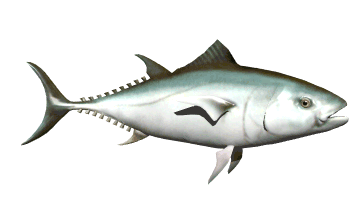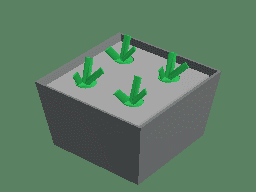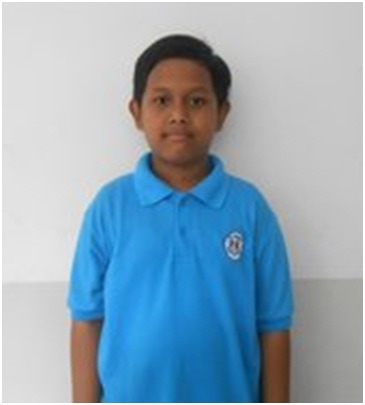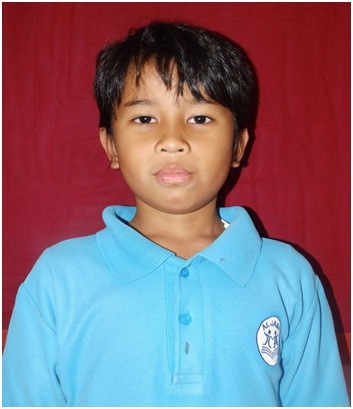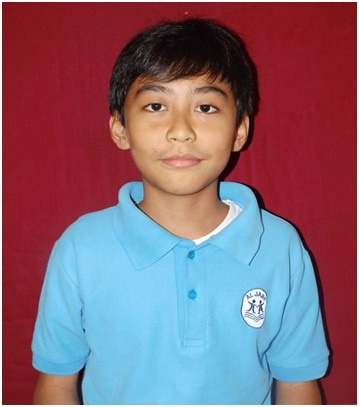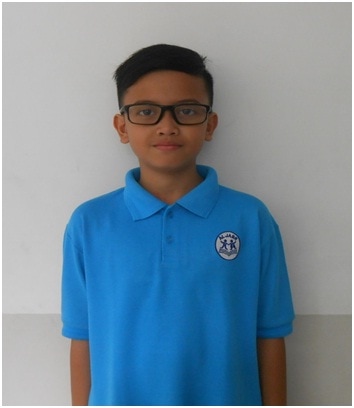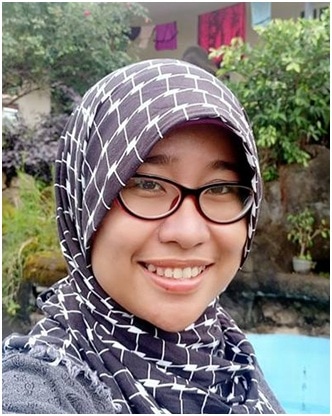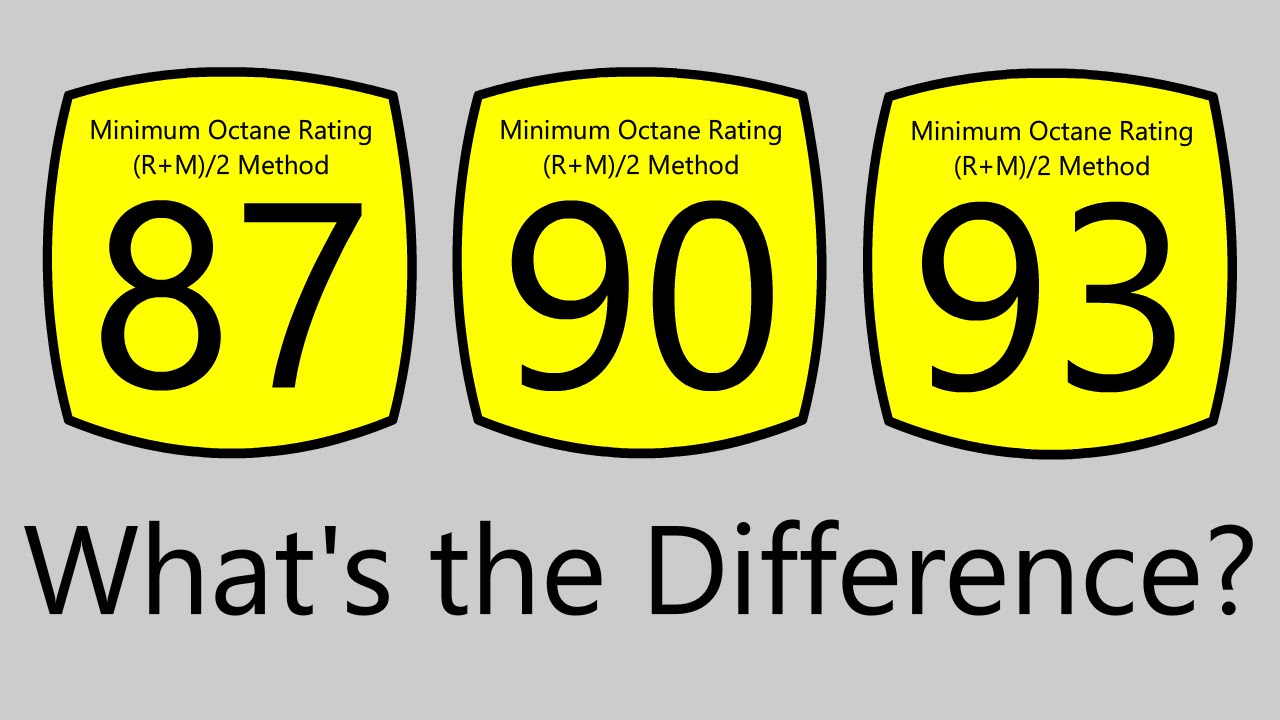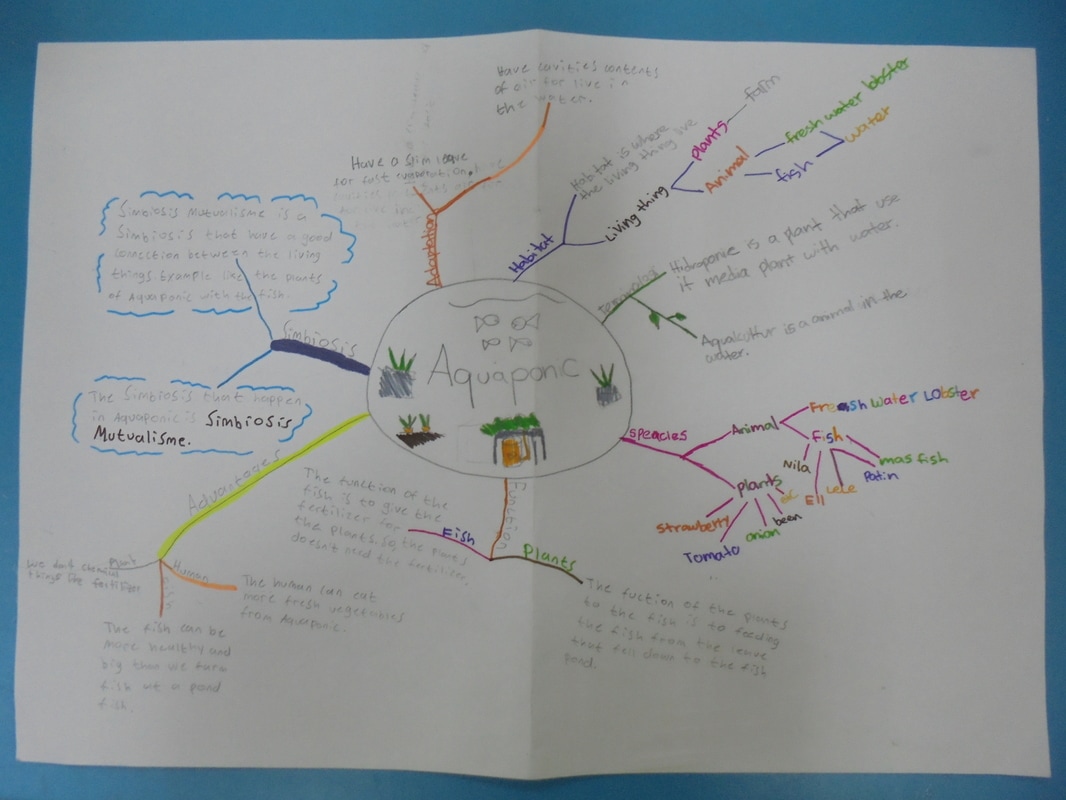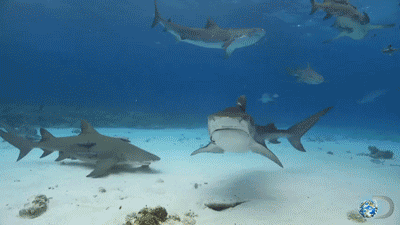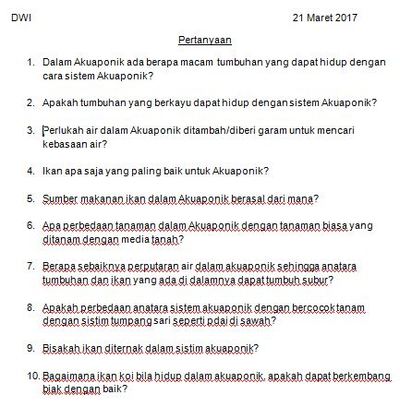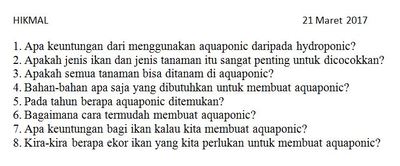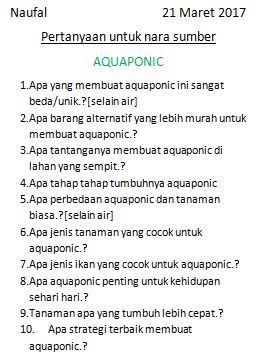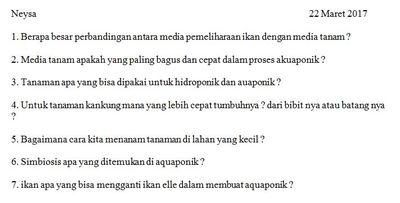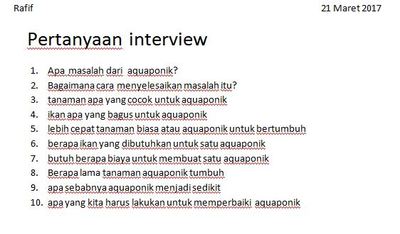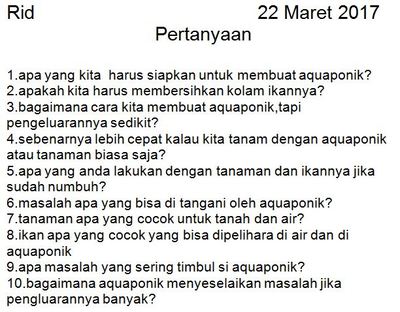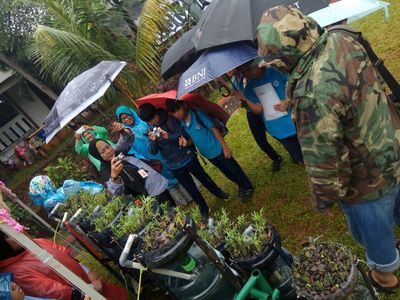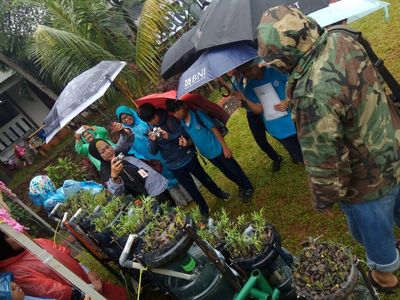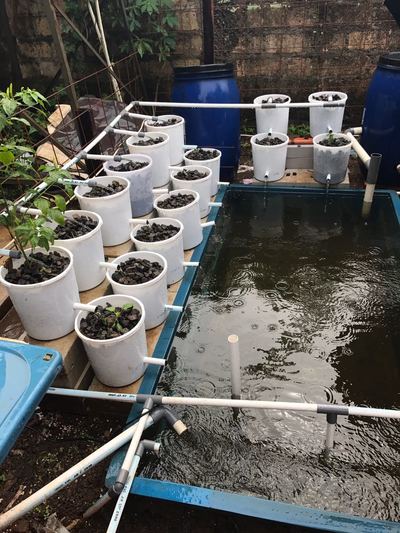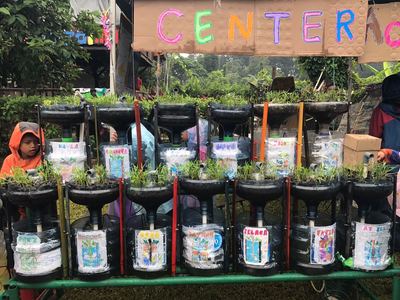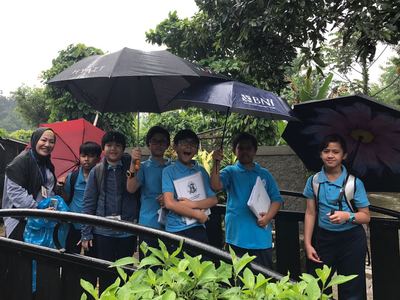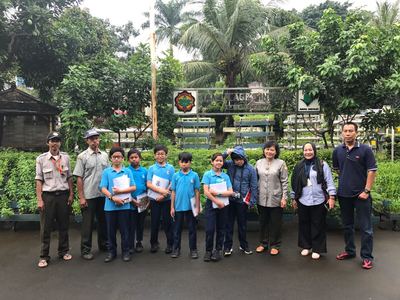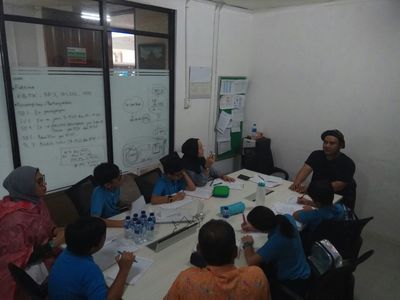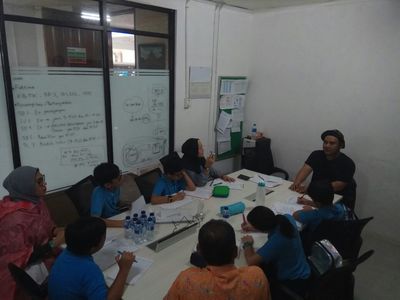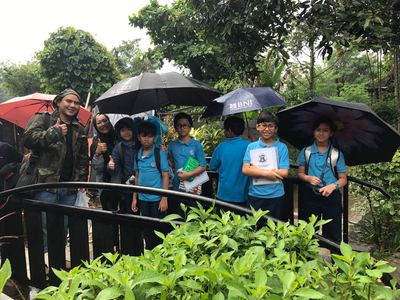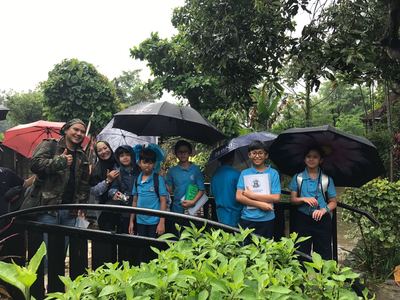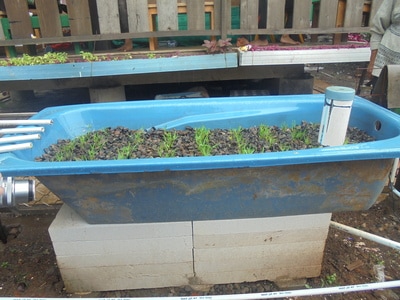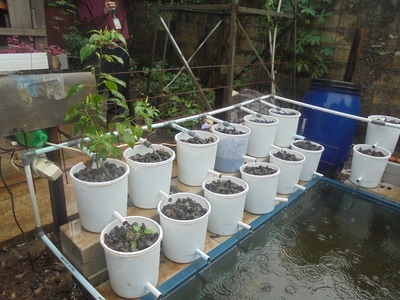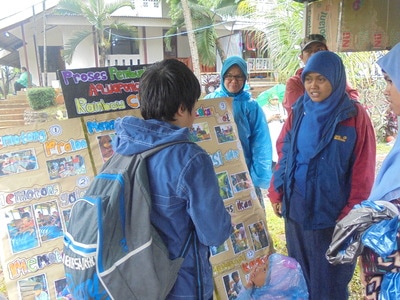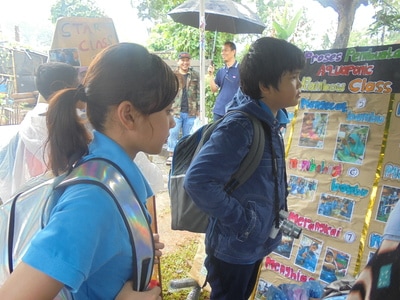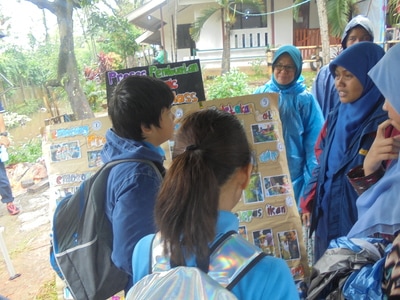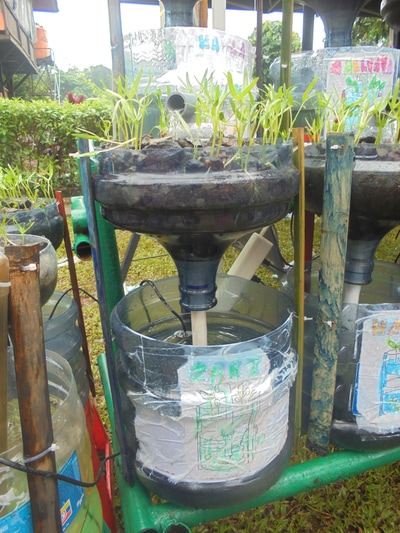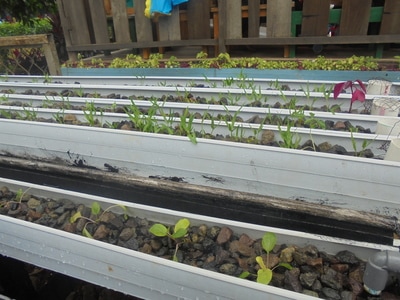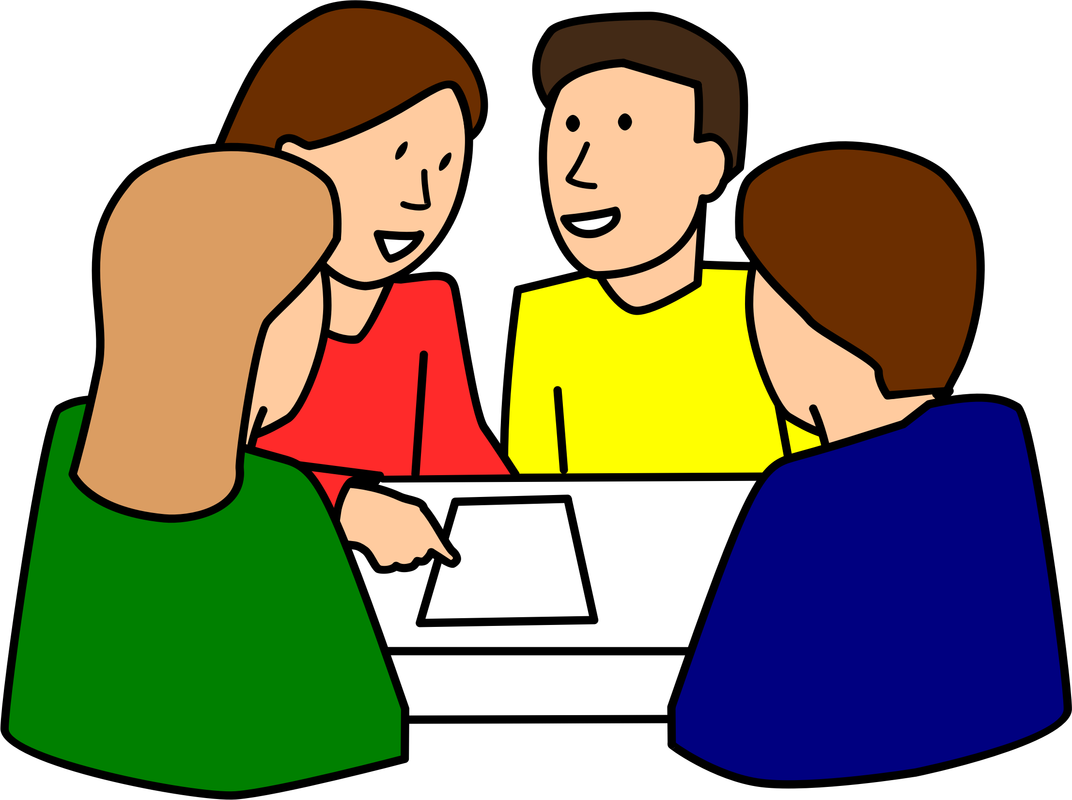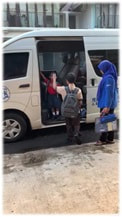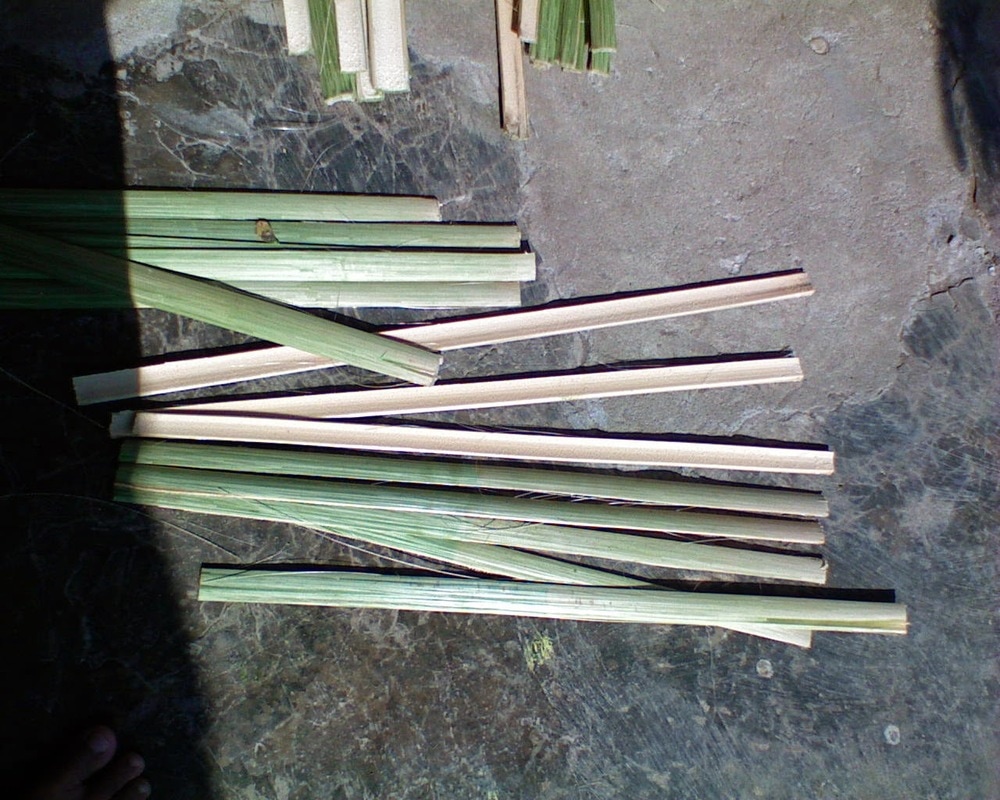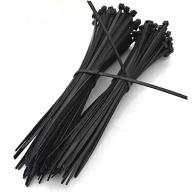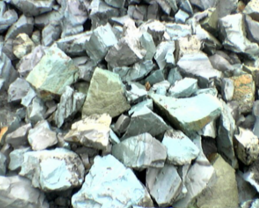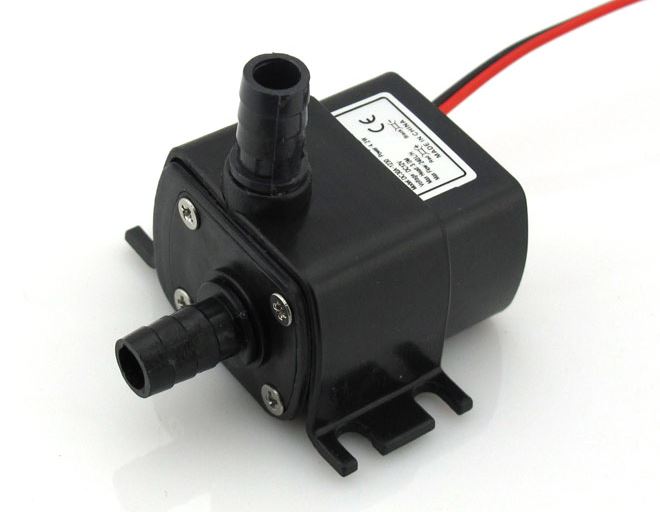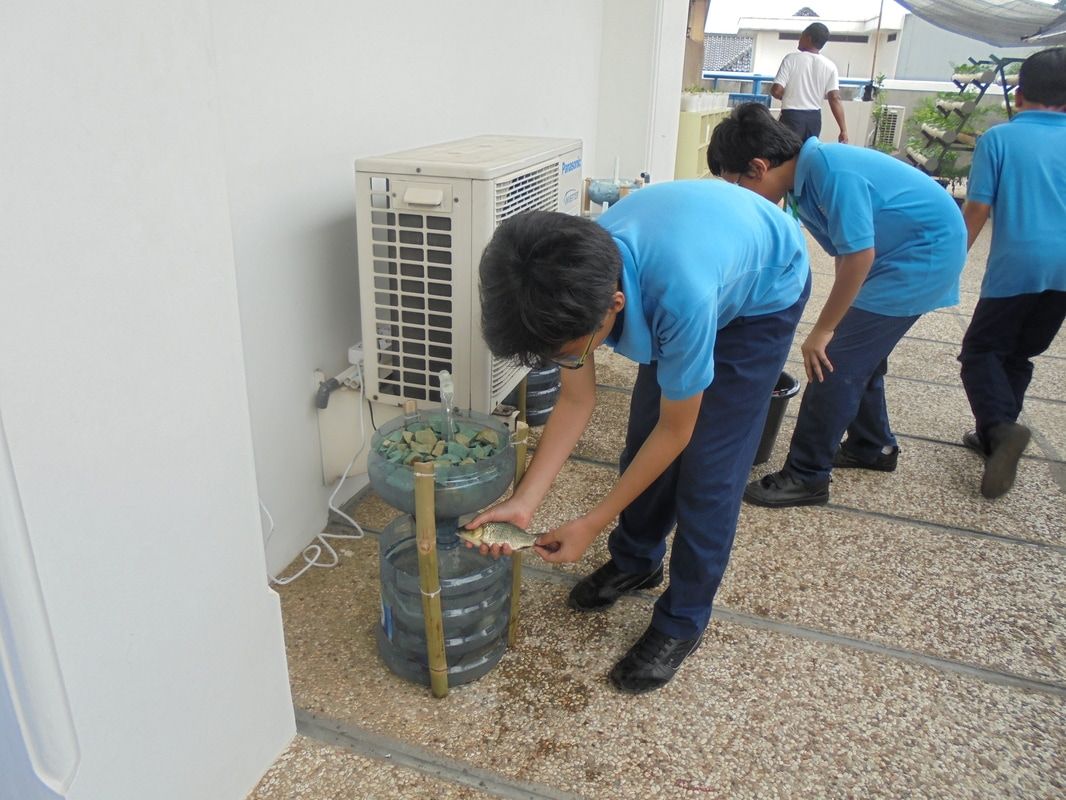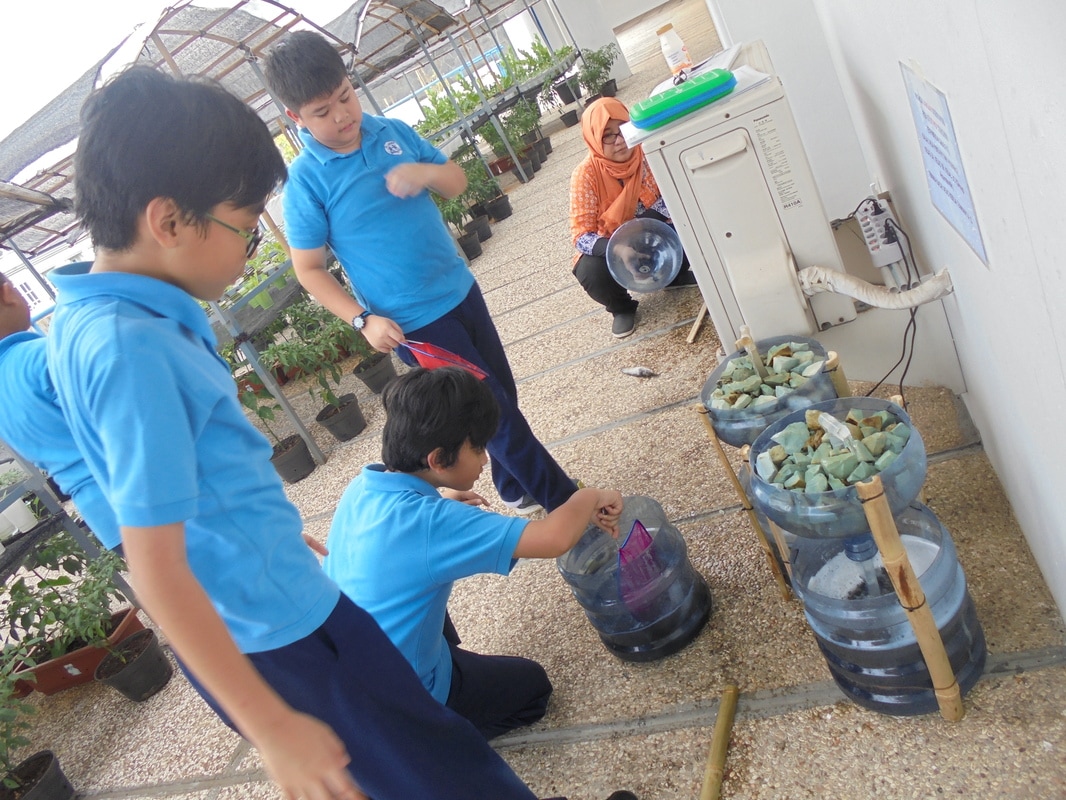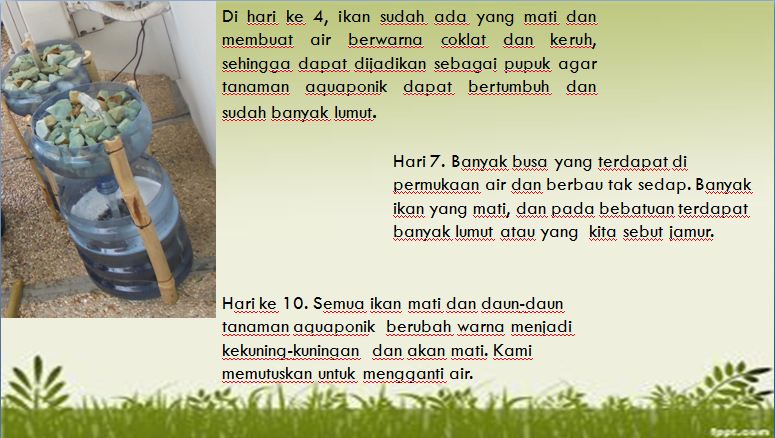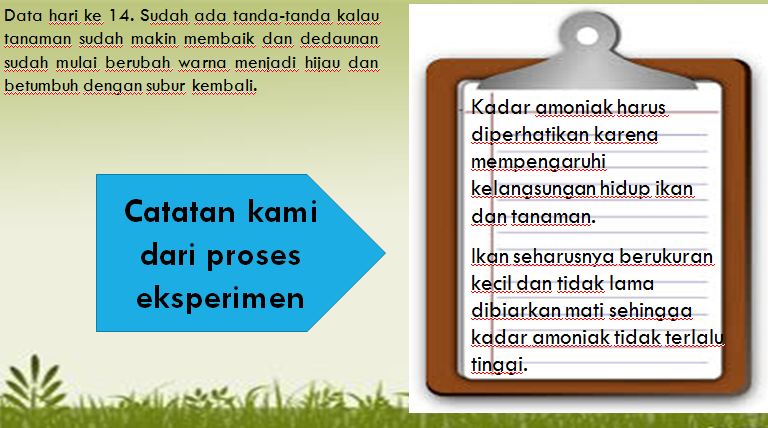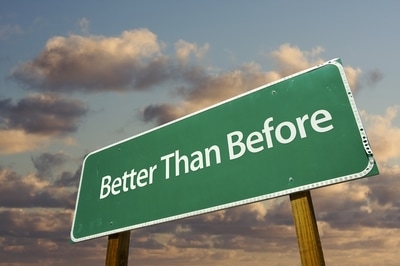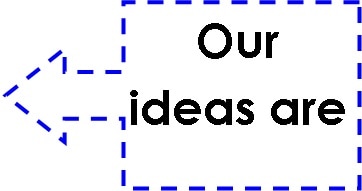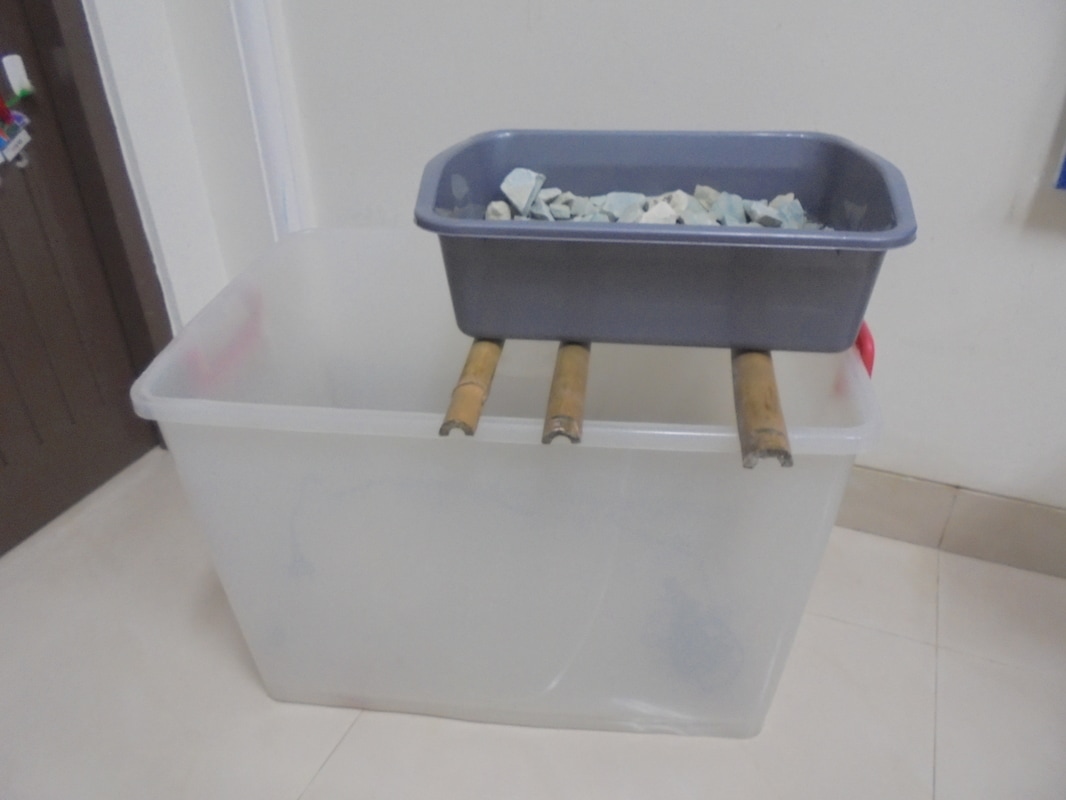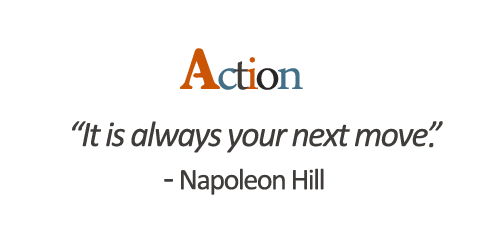The students
The mentors
|
CENTRAL IDEA
Biodiversity relies on maintaining the interdependent balance of organisms within systems. LINES OF INQUIRY
|
KEY CONCEPTS
Causation, Connection, Responsibility RELATED CONCEPTS Balance, Biodiversity, Interdependence LEARNING OUTCOMES
|
EXPLORING, WONDERING AND QUESTIONING
Collecting data and reporting findings
To collect data about aquaponic, we went to BPTP (Balai Pengkajian Teknologi Pertanian) Jakarta on Thursday March 23, 2017.
We also visited Bapak Fadly whom use aquaponic sytems that he made by himself in his garden. He consume the aquaponic products for his food and family. He helped Sekolah Alam Ciganjur in making aquaponic system that is displayed in their Science Fair Event.
experimenting and playing with possibilities
|
After we have the knowledge about aquaponic, we do an experiment:
- Making aquaponic - Compare the aquaponic and non aquaponic system |
We want to know:
- How to make the simple aquaponic system - Which plants grow faster and fertile - Which fish is healthier |
STEP 1
Making Aquaponic
Making Aquaponic
A. Prepare the materials
B. The Process of making the aquaponic tool
Step 2
Experiment Process
Experiment Process
experiment journal
DEEPENING UNDERSTANDING THROUGH THE APPLICATION OF A CONCEPT
action
We believe with the knowledge we can make aquaponic from the simple and reusable materials that can help to develop urban farming and increase a family’s economy. So we decide to spread the knowledge about aquaponic to others.
on Friday May 5, 2017, we presented about aquaponic to Al Jabr students from 5th grade to the upper grade in the Student's Assembly.
We also visited and explained about aquaponic to our neighbor SDN 13 Pondok Labu (the member of SISWA PEDULI organization of SDN 13).
on Friday May 5, 2017, we presented about aquaponic to Al Jabr students from 5th grade to the upper grade in the Student's Assembly.
We also visited and explained about aquaponic to our neighbor SDN 13 Pondok Labu (the member of SISWA PEDULI organization of SDN 13).

